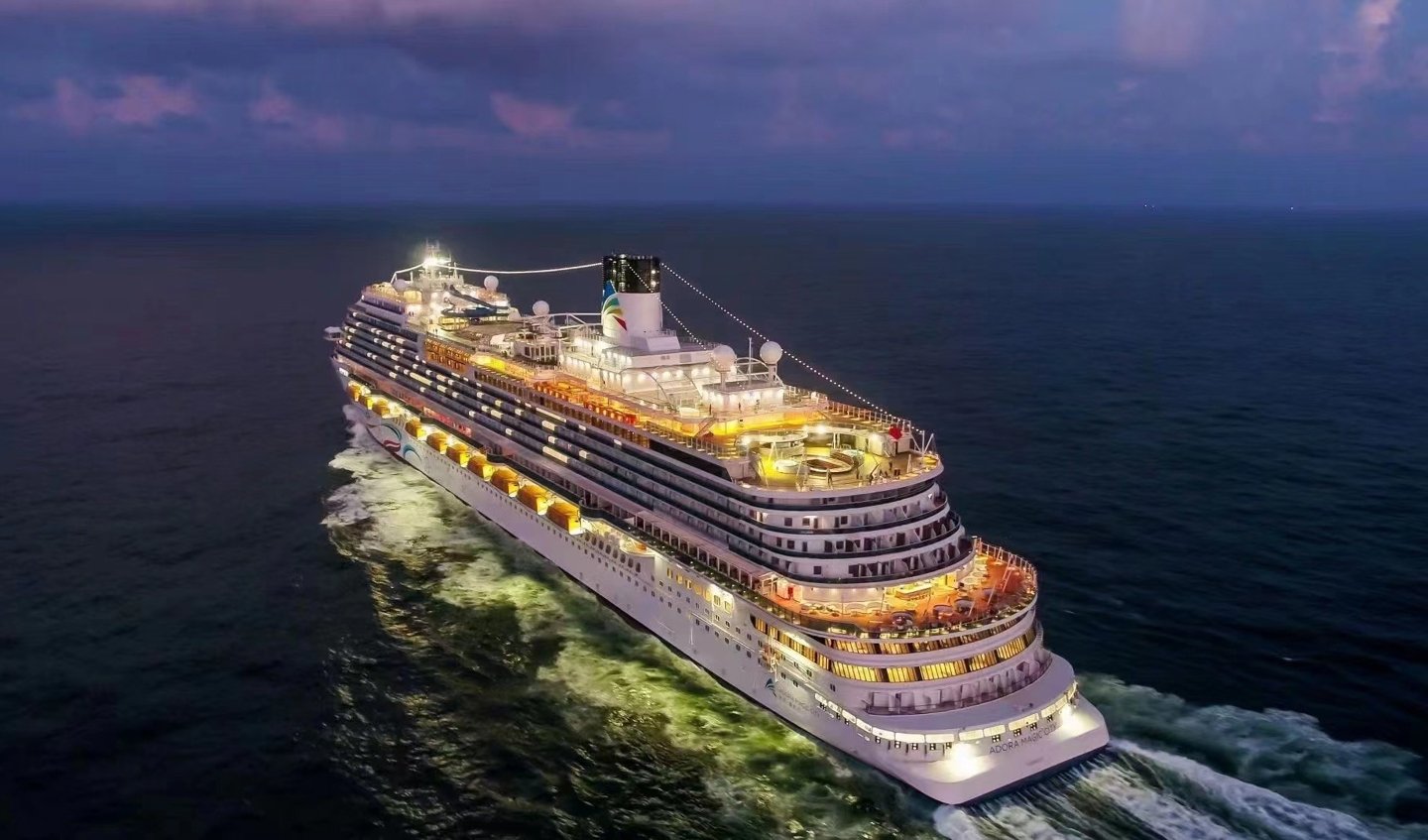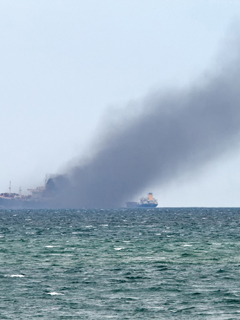The 5,246-passenger Adora Magic City is the first large cruise ship ever to be built in China and marks the beginning of the country’s inevitable and rapid development in cruise design and construction, says Marco Scopaz, LR on-site Project Manager and Marine Surveyor. The cruise vessel’s maiden voyage, he says, will mark the end of a groundbreaking journey of more than four years – interrupted by Covid – at China State Shipbuilding Corporation’s Shanghai Waigaoqiao Shipbuilding.
Scopaz explains that its framework has changed since its original inception back in 2015. When the cruise concept was first discussed, it was known as AIDA Asia. As part of a joint venture, Carnival Group and China State Shipbuilding Corporation (CSSC) commissioned the construction of the vessel to Shanghai Waigaoqiao Shipbuilding (part of CSSC), and once built, the ship would be operated by AIDA’s Asian setup. The design and development of the project was led by JVPC (a joint venture between CSSC and Fincantieri) based in Shanghai. Today, the project carries the name of the ship itself and is a subsidiary of China’s state shipbuilding company.
The 1292-person crew are due onboard in new next few weeks will familiarise themselves with the ship between then and the end of the year. The ship’s delivery is scheduled for December 15, followed by a shakedown cruise, enabling promotion to travel agents, attendance by principals, and further crew training. The maiden cruise will follow in January.

The project is likely to prove a catalyst for two likely developments, Scopaz believes. On the one hand, well-to-do Chinese tourists are likely to scramble for short four-to-five day cruises on the new vessel. Cruise holidays on Chinese-built ships servicing the domestic market are significantly shorter than cruise breaks elsewhere, aligning closely with holidays that are typically much shorter in China.
Chinese cruising ready to go
However, the similarities with the domestic cruise market stop there. The Adora Magic City is likely to mark a new beginning for the Chinese cruise sector. It will provide an unprecedented cruise experience for customers, with significantly higher outfit standards, larger cabins, more space generally, as well as international components, Fincantieri-designed cabins, and so on.
The other likely development is that the relatively small number of global cruise heavyweights, accustomed to building most of the world’s cruise vessels at specialist yards in Italy, France, Germany, and Finland, are likely to watch developments in Chinese cruise construction very closely. As in many other sectors of shipping, construction is likely to move steadily to the world’s most populous country.
How quickly this transition will take place remains to be seen. Whatever the timeframe, however, major cruise lines will be eyeing up both sides of the market in terms of demand and supply. Although Scopaz describes cruise in China as ‘a sleeping market’, he believes that the maiden voyage of the Adora Magic City in January will change all that.
For LR, the project is significant. With more cruise ships under its class than any other classification society, LR is already a leader in the field. But Scopaz believes there is vast potential in China, not only for builders and consumers, but for those engaged at every stage of the supply chain too.
Global supply chain …
On this first vessel, he explains, many international suppliers, notably in Europe, have provided parts and components and support for the fitting-out process. The diesel-electric setup is based on five ABB diesel generators, for example, arranged in two engine rooms driving two Azipod XO 2100 units, also from ABB.
Each pod drives directly a speed-controlled fixed-pitch propeller that can be rotated through 360° around its vertical axis. Power is supplied by the ship’s network through transformers.
Other features of the vessel such as fire-fighting systems and life-saving appliances have also been provided by international suppliers. Its 20 lifeboats, with capacity for 314 persons, have been supplied by Fassmer; its two marine evacuation systems each with two 153-person inflatable life rafts, by Viking.
… to become more local
Now though, Scopaz explains, China has the opportunity to build its own supply chain, with engineering firms, equipment providers, and service companies including designers and interior decoration specialists located close to construction facilities. Not only will the goods and services command lower prices, but they will also be available just around the corner, saving time and money.
Unlike commercial shipbuilding, Scopaz points out, there is little serial production in the cruise sector. Therefore high-tech products are often unique and require deep sector knowledge.
A partner with global sector experience is essential. Class, he says, will play a key role in supporting these initiatives, including R&D into new cruise fuels and other sustainability initiatives.
Class will provide oversight not only in the design and build process. It will also support companies embarking on the manufacture and supply of components and products for the sector, as well as the training of their personnel, and the implementation and review of documents and standards.
For Scopaz, then, the end of a mammoth four-year commitment is looming What now?
“I want to remain in Asia with my eyes open to China,” he admits. “Of course, they want to develop something else because the shipyard has acquired so much knowledge during the project. If they don’t continue, that knowledge would be lost and I don’t think that will happen.”
Paul Nichols, Principal Specialist in LR's Passenger Ship Support Centre, recently spent a week onboard the vessel, and was involved in the early discussions regarding the contract with CSSC. He believes no new project is made in isolation and the success of the Adora Magic City build is a testament to the support of many participants.
“LR has been working on this project for many years in offices in both Asia and Europe. With the original Carnival design built in Italy, the Technical Support Office work involved both our Trieste and Shanghai offices to ensure the consistency in interpretation and application of LR services. In most meetings with the yard, it has often been mentioned that the support from the LR team has been significant and is greatly appreciated.”







